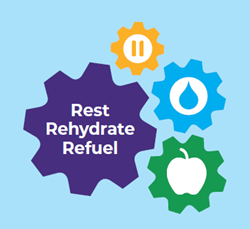Introduction

To be able to deliver safe and effective care perform to their best ability, nursing staff need to be rested, hydrated and able to access healthy eating options wherever they work. The RCN recognises that there will be occasions where nursing staff miss their breaks, but it must never be the norm.
Nursing is a physically and emotionally demanding profession and we need to make sure that everyone has breaks, stays well hydrated and has access to nutritional food.
Employers are legally required to provide rest breaks and adequate welfare facilities for staff as outlined in the Health and Safety Executive's Welfare at Work guidance, however, in the RCN's 2022 survey, almost two thirds of respondents (61%) said they were unable to take the breaks that they were supposed to including toilet, drink and food breaks (RCN, 2022).
If nursing staff are not enabled to self-care and have a poor working environment, they are more likely to become unwell, burn out or want to leave the job.
This resource outlines the moral and legal case for ensuring that nursing staff can rest, rehydrate and refuel. It also gives tips on self care, signposts to further information and help to get improvements in your working environment be you an RCN rep, manager or member of the nursing team.











